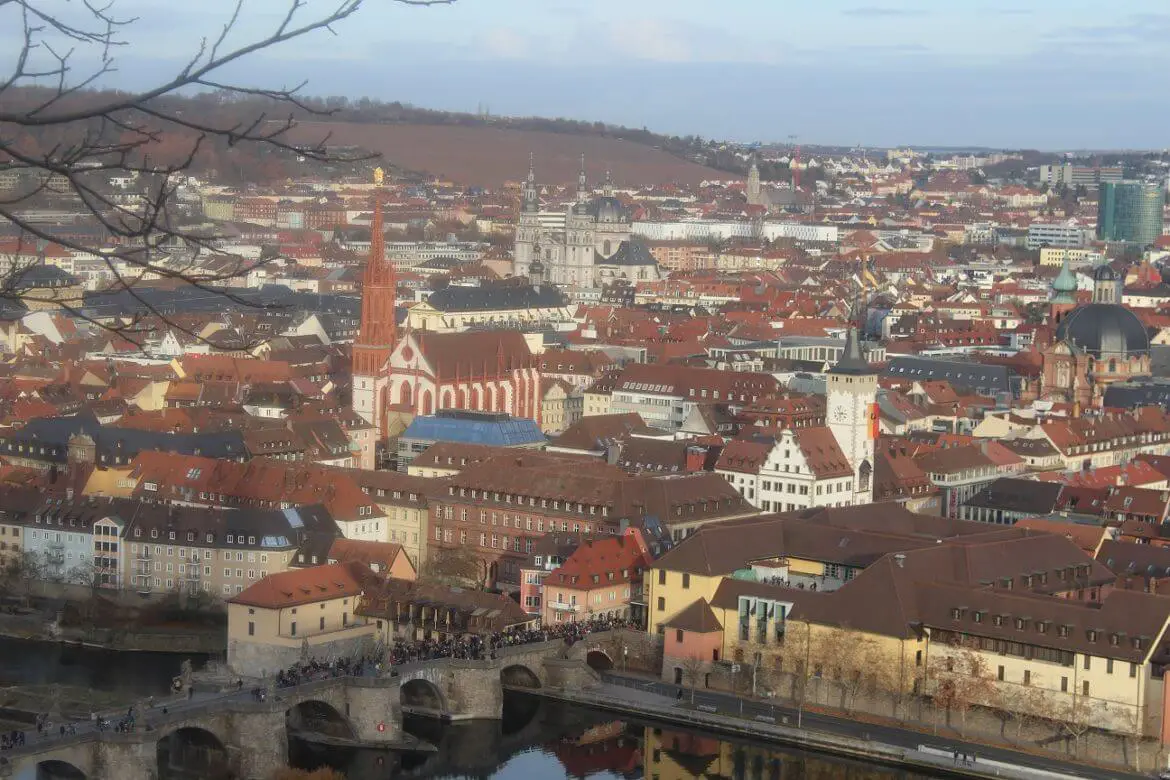
You want to visit Franconia for your next holidays? Great choice! Franconia has so many things to offer! With fewer tourists than München, the region provides its visitors with a glimpse in local life, its heritage, and culture. If you’ve never visited, this is the right time to change this.
Countless amazing medieval towns, each with its own personality, an abundance of beautiful landscapes, vineyards and wineries where you can enjoy tastings are just a few of the most attractive sites. Needless to say, beer is a big deal in Franconia, as in all Germany. It seems like no matter how many days you plan on staying in Franconia, it is just not enough. It could keep one busy exploring for weeks. Let’s say from the start that 4 days will fly by, but if that’s all you have, here’s is my exact 4-day Franconia itinerary, that you can follow to get the most out of your trip.
What does Franconia refer to?
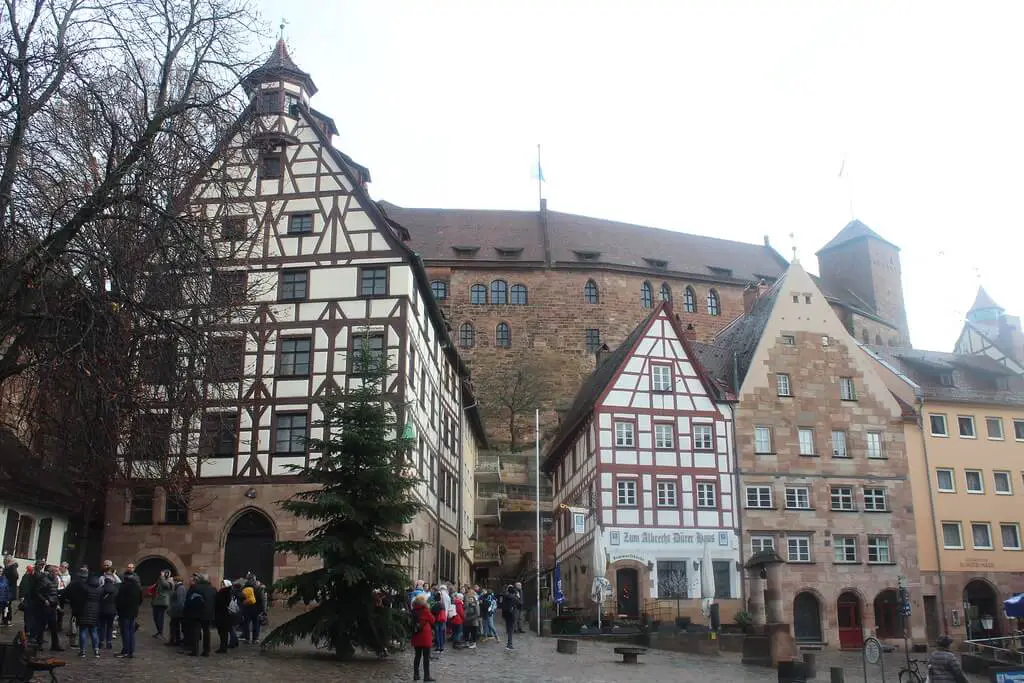
Franconia lies in southern Germany. Most of it is also part of Bavaria, but the region has a slightly different dialect and culture. It’s famous for its vineyards, medieval towns, and great food.
How to get to Franconia
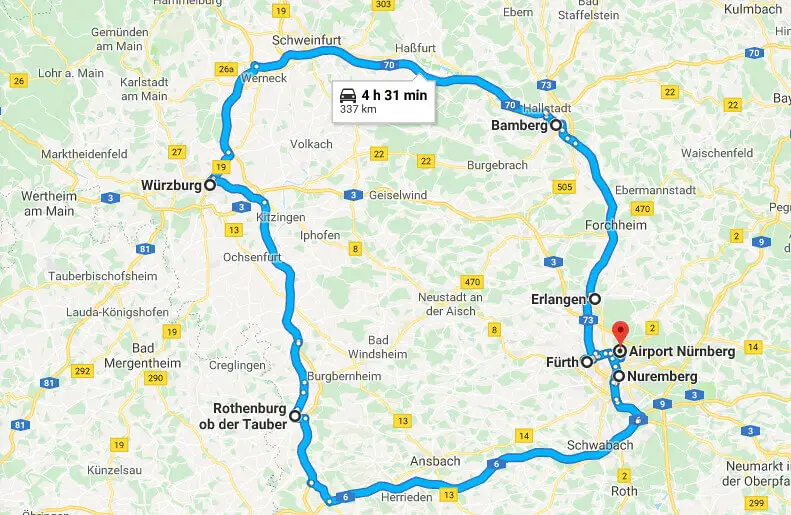
The best way to get to Franconia is to fly directly to its unofficial capital, Nuremberg. Given the short distances in Germany, you can then go to the other cities by train or a rental car. The train is the best way to travel across Germany and there is also a Bavarian train ticket you can take advantage of. If you prefer renting a car, here’s is my guide to make it as easy as possible for you to do so.
Where to stay in Franconia?
Tip: Spread out for the full effect, with two or three bases to move around more easily.
We moved around Franconia a lot, spending one night in Bamberg, one night in Colmberg and one in Nuremberg. Accommodation in this part of Germany can be a bit expensive, especially if you are traveling during the Christmas markets season.
- In Bamberg, we stayed on the outskirts of the town. Unfortunately, I can’t recommend you our accommodation as we didn’t like it at all. It was not very clean and looked more like an outdated hostel. It was not that cheap either.
- In Colmberg, we stayed at Gutshof Colmberg. If you are traveling by car, I totally recommend this one. It was our favorite accommodation on the trip. Each room has its own theme, the staff is really friendly and the food is great. Besides it is close to Rothenburg ob der Tauber and the price can hardly be beaten. There is also a nice castle next to it and a lot of dear jumping around in the gardens of the castle.
- In Nuremberg, we stayed at Five Reasons Hostel & Hotel in a double room with shared bathroom. This is very conveniently located as it’s inside the historical walls and you can easily walk to all the main landmarks and the town center. On the other hand, the staff was not the friendliest and parking was not available (but we could not see any, even full). If you don’t have a car, it’s great. If you do have one, you might want to look for something else as parking in Nuremberg is expensive, even outside the city walls.
Franconia 4-day itinerary
Day 1 – Fürth, Erlangen, and Bamberg
We started our trip by flying to Nuremberg in the morning. We took the rental car and off we were.
Fürth
Our first stop was Fürth, a nice town, that stays in the shadow of its more popular neighbor, Nuremberg, as this is less than 10 km away. The town might not turn your world upside down, but is a nice place for a stroll and a morning coffee.
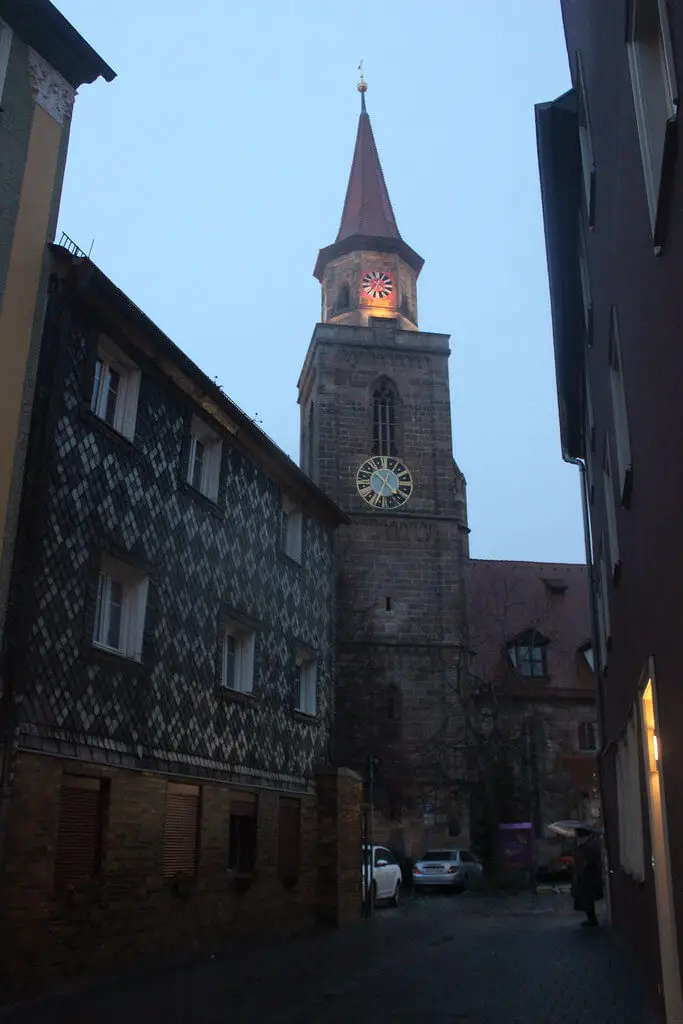
Walk along Gustavstrasse, admire the beautiful traditional houses from the 17th and 18th centuries, the many taverns or restaurants. Stop at the oldest standing church in town, St. Michael, that’s over 1000 years old. It’s time to have a coffee in the Green Market (Grünnenmarkt). Afterward, try to find the quirkiest alley in town, Pfarrgasse, full of trinkets and animal statuettes. If it’s less than a month before Chrismas, head to Fürther Freiheit, where a cozy Christmas village of wooden huts will be.
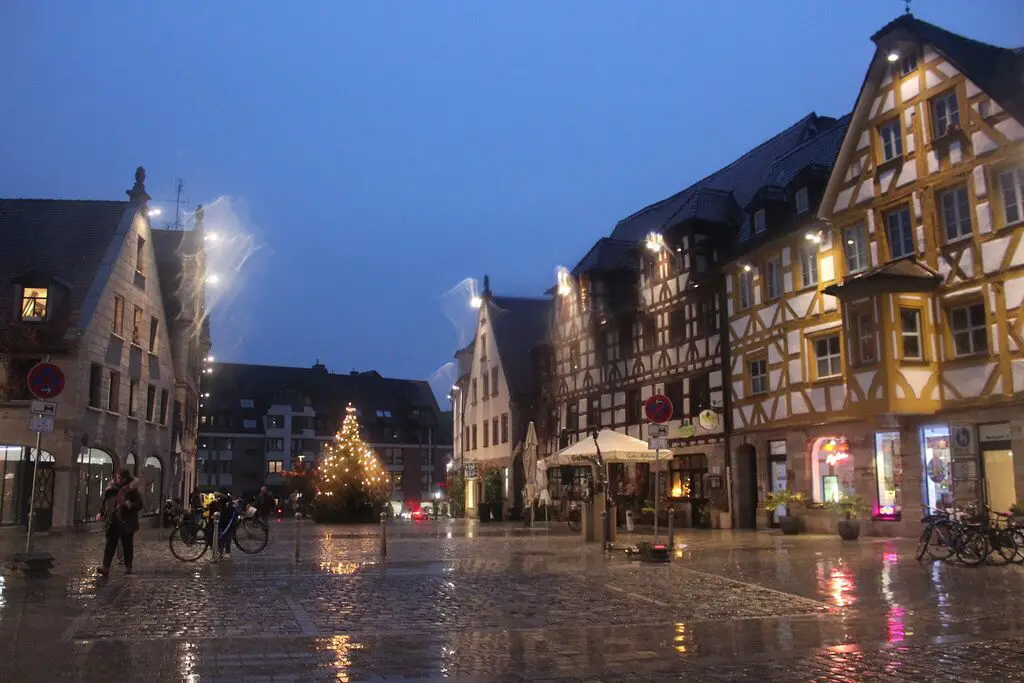
At 12:04 be anywhere close to the town hall in order to listen to a few bars from Led Zeppelin’s Stairway to Heaven. You’ll easily recognize the town hall by its tower that resembles the one of Palazzo Vecchio from Florence. Before leaving, take a quick stroll on Hornschuchpromenade to see some neoclassical mansions from the 19th and 20th centuries owned by the rich industrialists and merchants of the time.
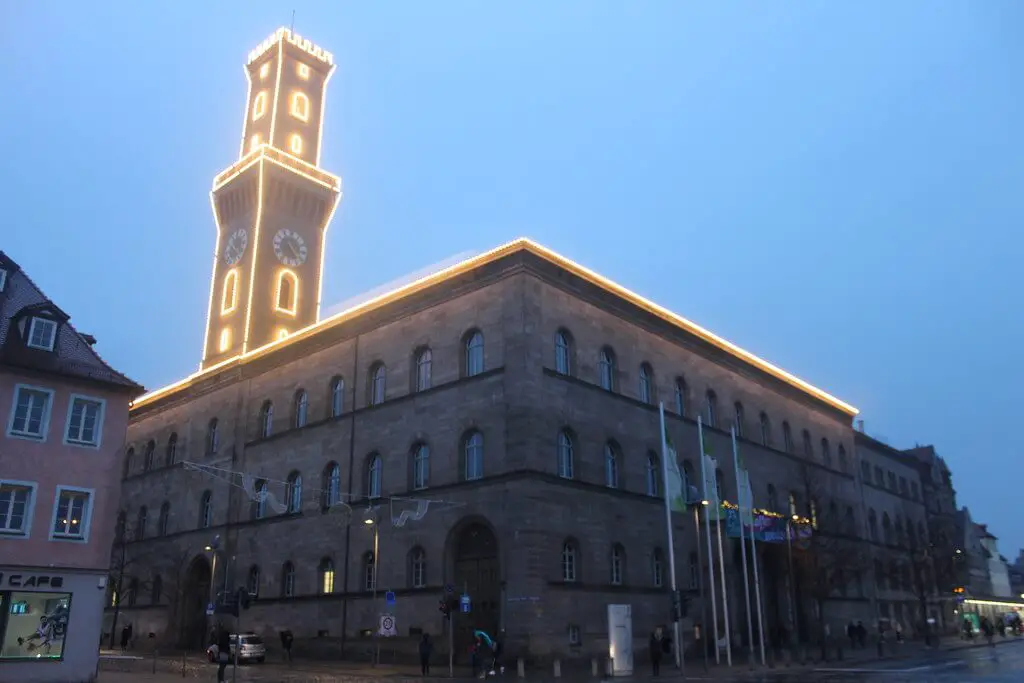
Tip: If you have children with you, take them to Playmobile fun park. This is a doll-themed amusement park, similar to Legoland, but instead of rides, it features active games which require interaction and exercise.
Erlangen
Our next stop was Erlangen, 15 km north, where we parked the car at the train station. From there we walked towards Marktplatz, the heart of the city, passing by the Huguenottenplatz and the Huguenottenkirche.
Notice that the architecture is different from the rest of Franconia and Bavaria. There are no half-timbered houses, but broad streets, palaces, and gardens. This is the legacy of the Huguenots that were exiled from France in the 17th century. Erlangen opened its door, welcomed them in and created a new town for them to settle. When the old town burnt down, the new town became the old one, the one that you’ll see today.
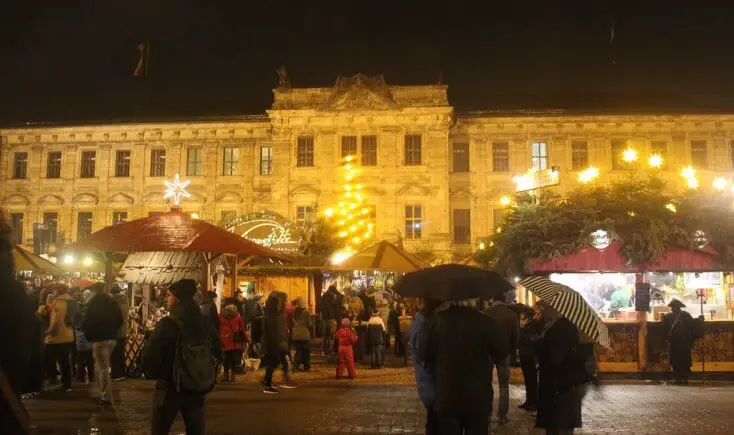
The most popular spot in town is the baroque Palace of the Margraves of Brandenburg-Bayreuth. Nowadays it is used as an administrative building by the university. Walk into its garden with strong French and English influences. The large square in front of the palace hosts the carnival in February, the Christmas market in December and other festivals that take place in the town.
The daily life of the city is strongly related to Siemens. Almost all people work for the company or its suppliers. You can even visit the Siemens Med Museum, that tells the history of medicine and medical innovation.
Erlangen has a notable beer history, many breweries and a famous 12 days beer festival since 1755, Bergkirchweih. The city’s tourism group even has a great self-guided tour highlighting all the beer hotspots and brewing history of the city. The entire route is two kilometers and easily walkable.
Bamberg
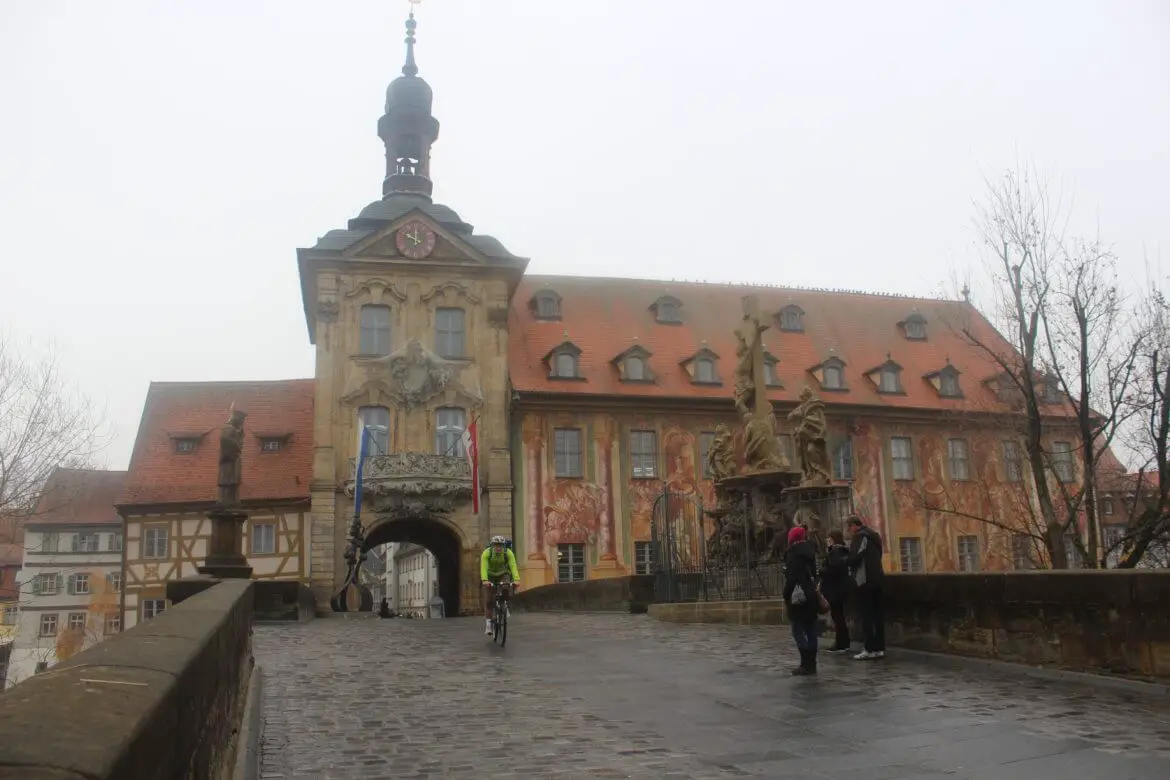
The train ride or drive to Bamberg takes around half an hour. As you’ll get there in the evening, there won’t be much to do. Just take a lazy stroll on the streets of the town to the old city hall. It might be a touristy spot, but you can’t go to Bamberg and not see the beautiful old town hall located in the middle of the Regnitz river. Afterward have a traditional smoked beer at Schlenkerla or Spezial, the only two breweries that brew it following a centuries-old tradition. Book a nice accommodation, as close to the city center as possible.
Day 2 – Bamberg, Würzburg and Rothenburg ob der Tauber
Bamberg
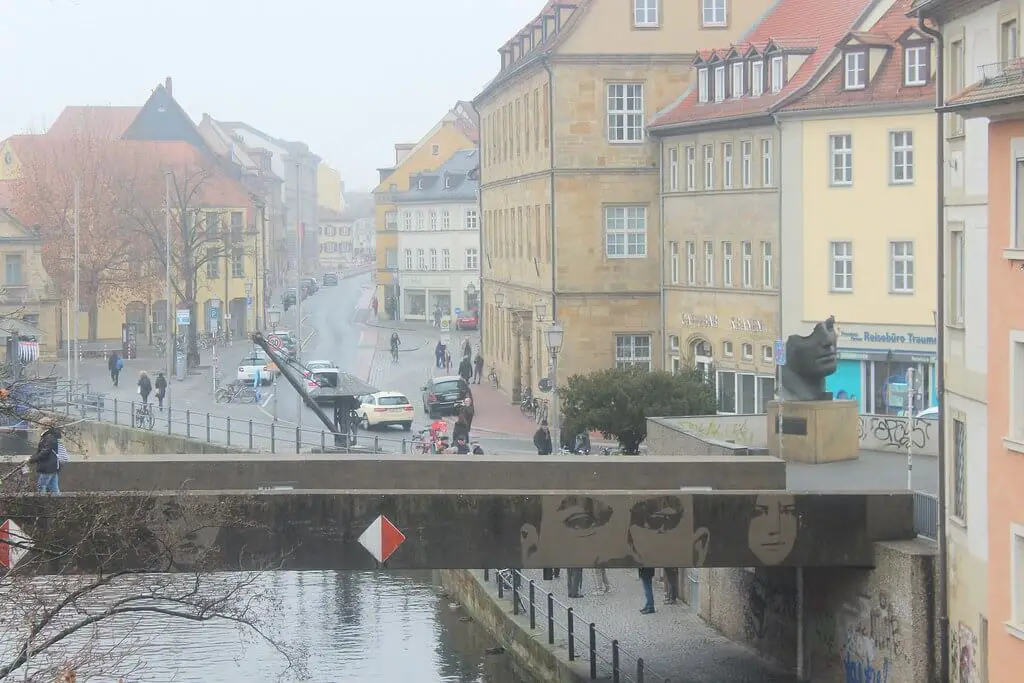
On the second day, we spent the morning wandering through Bamberg and ticking off the landmarks that we hadn’t seen the previous day. The historic city center has remained pretty much intact and is also recognized by UNESCO as World Heritage. There are numerous sights that shouldn’t be missed: the imperial cathedral, the Old Court, The New Residence, Little Venice, Bamberg sculpture trail, the Green Market and even a beer museum. Don’t miss the stunning views over the town from Michaelsberg Abbey. We could easily have spent more time in Bamberg, as we really enjoyed it, but slowly made our way to Würzburg.
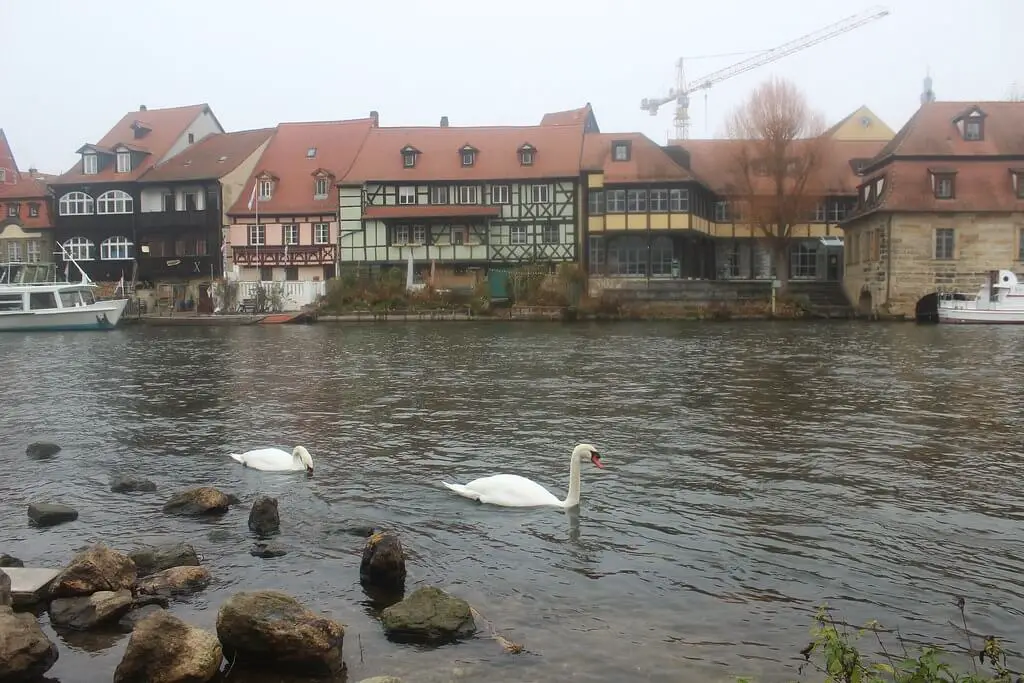
I also talk about Bamberg in my article dedicated to the city and its marvelous sights.
Würzburg
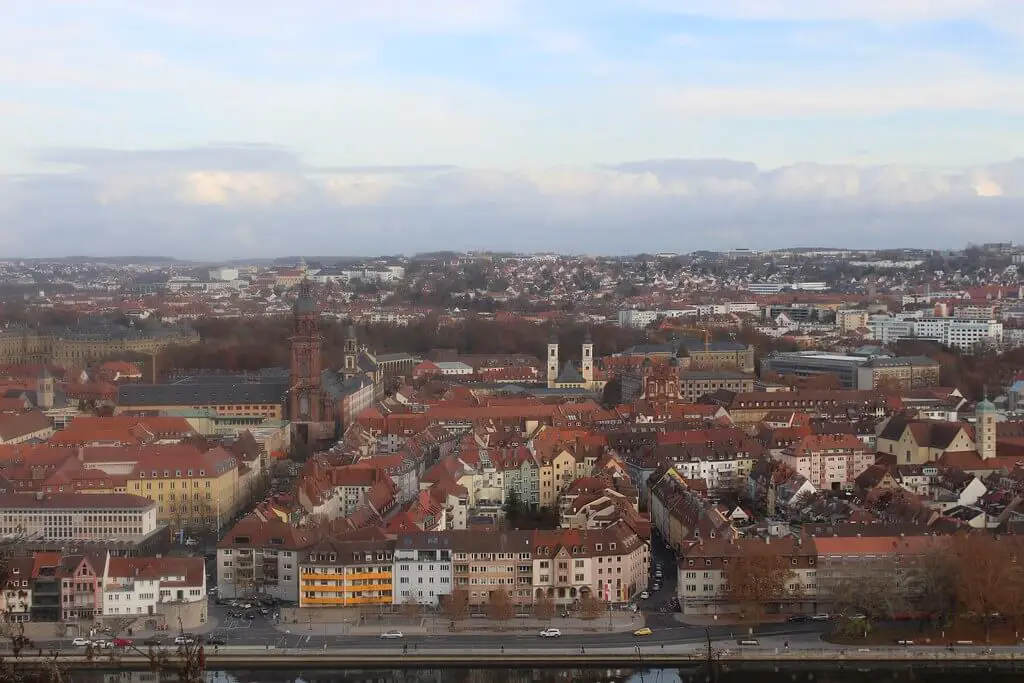
By car or by train, it should take you less than one hour to get to Würzburg. We headed directly to Marienberg fortress for an amazing bird’s eye view of the city. After that, we got down in the old town and checked out the Residenz, the Würzburger Dom, the city hall and the main streets. The town is easy to see on foot in half a day. Needless to say, with few cars allowed within the old town, walking around the medieval streets is pretty magical.
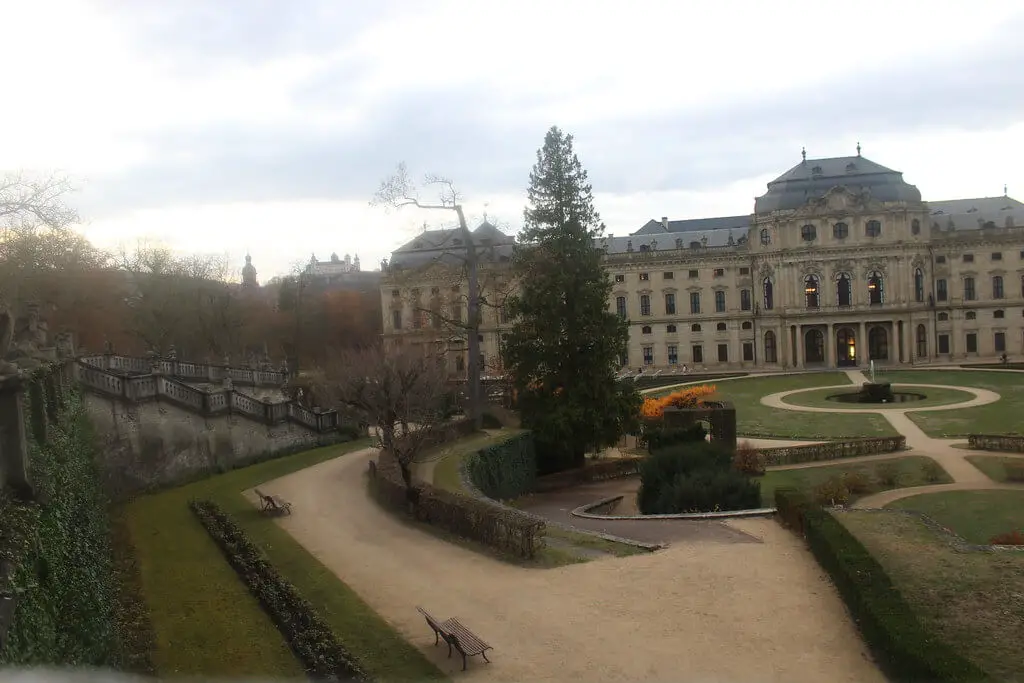
We got on the old main bridge just in time to drink a glass of wine at sunset. The region is famous for its white dry wines and wine tastings can be done at the vineyards all around the town that you’ll see from the fortress. However, I do advise you to look into a guided wine tasting tour so you can be worry free!
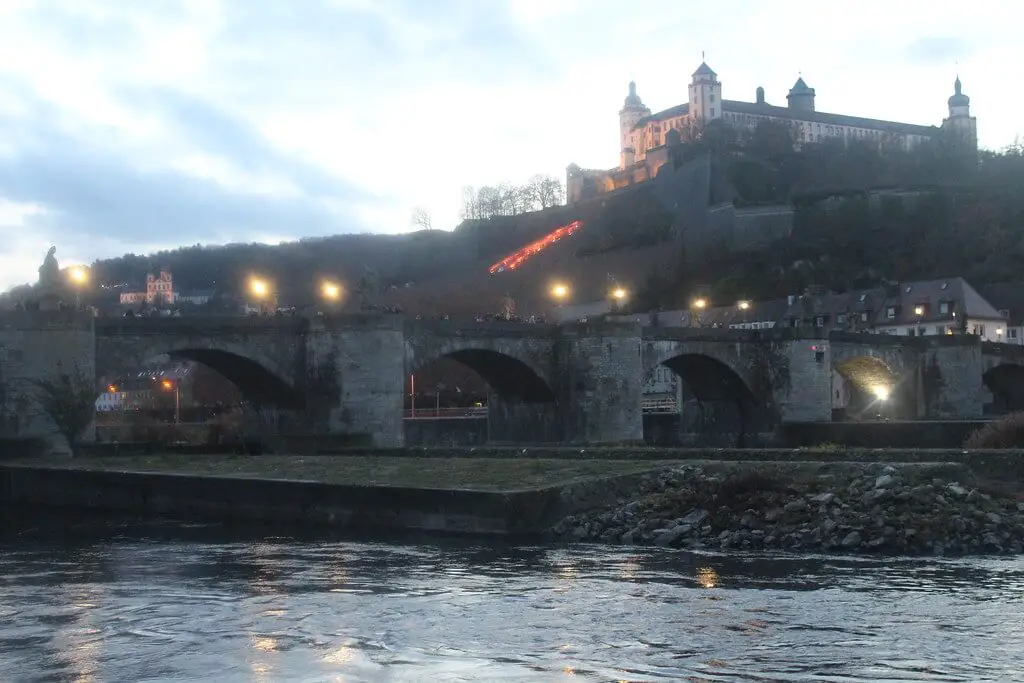
For more things to see in Würzburg, tips and tricks, read my article about it: What makes Würzburg an excellent travel choice.
Rothenburg ob der Tauber
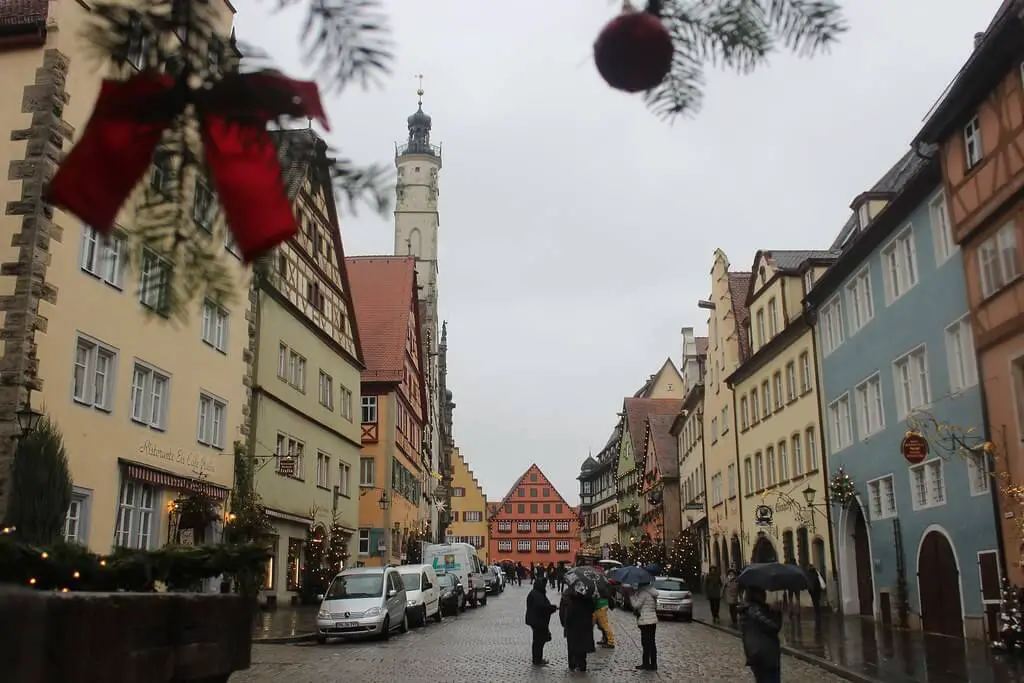
We closed the day with a stroll along the alleys of Rothenburg ob der Tauber (one hour from Würzburg). We also met the night watchman that was telling his companions about the town and its history. His enthusiasm and passion were contagious. We spent the night close by, in Colmberg, in the most beautiful guesthouse.
Day 3 – Rothenburg ob der Tauber and Nuremberg
Colmberg (optional)
On the morning of the third day, we visited the mighty Zollernburg castle that was just next to our accommodation and the local church, which was a very interesting experience. As it is a small village, everybody knew we were not from there, but said hello to us and welcomed us in.
Rothenburg ob der Tauber
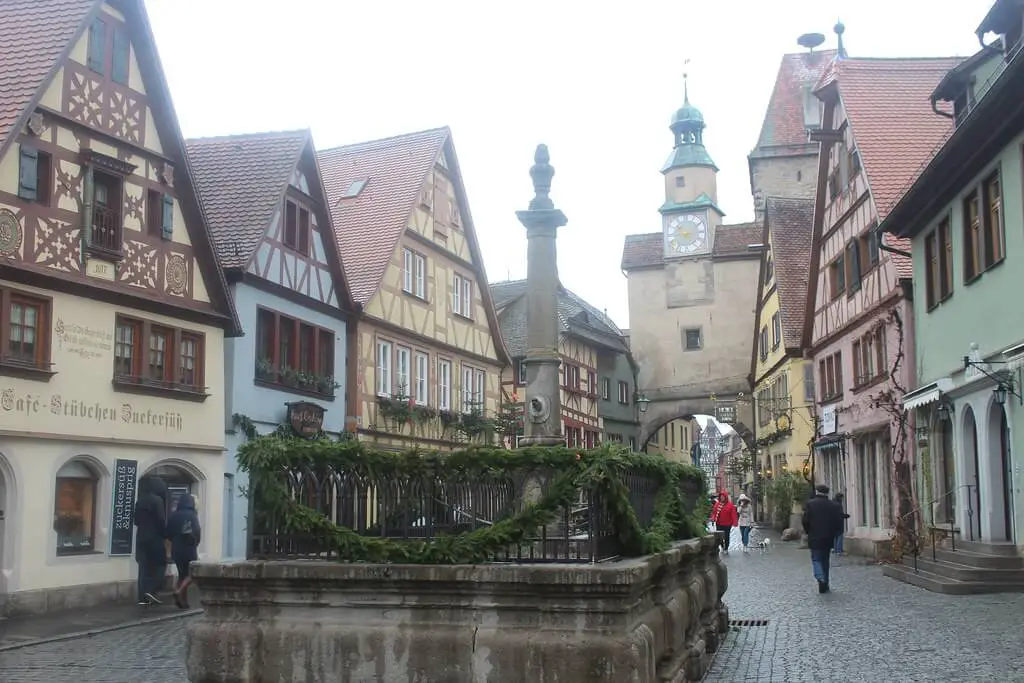
In the late morning, we returned to Rothenburg ob der Tauber and wandered the streets of the town admiring its beauty. To be honest, neither me, nor my boyfriend are museum people, but Rothenburg ob der Tauber is a truly fascinating museum under the open sky, the epitome of a romantic medieval town. It has plenty of beautiful historical houses dotted around on its alleys, most easily explored on foot. We highly enjoyed strolling around aimlessly and encircling it on the well-preserved walls.
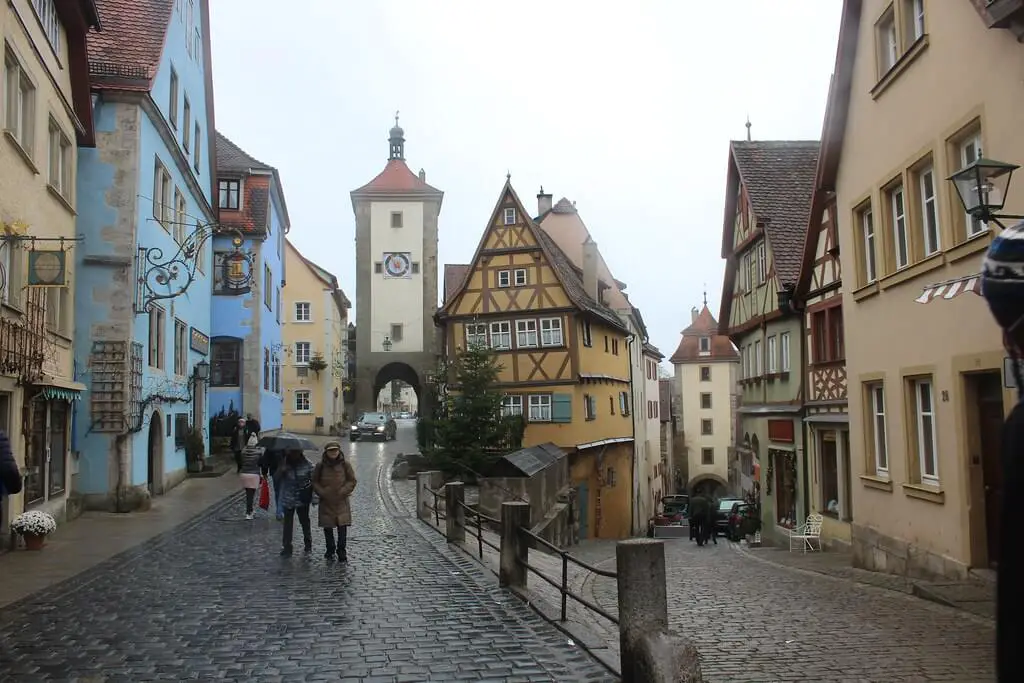
If you are planning to go there, and I strongly suggest you do, read my full article about Rothenburg ob der Tauber. There, in addition to the list of must-see attractions, you will find my best tips for a magic trip.
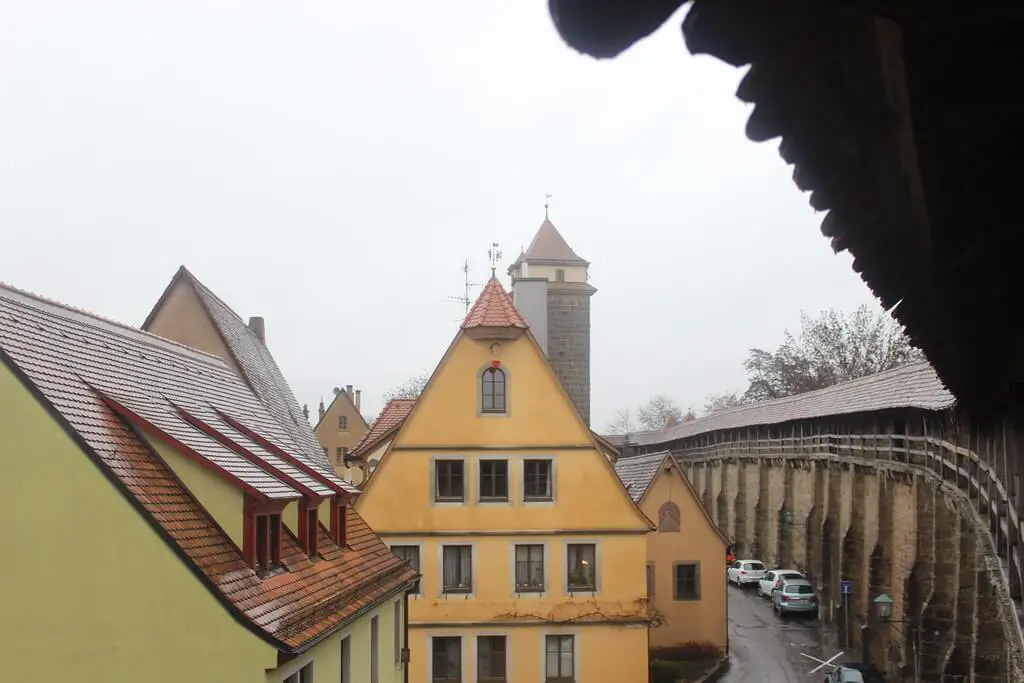
Nuremberg
You won’t even notice when the time will fly by and you will only get to Nuremberg in the late afternoon. Just in time to wander around the streets looking for a good dinner spot. For the night, the ideal solution is to find accommodation within the city walls, close to the main sight that you will explore in the morning.
Day 4 – Nuremberg
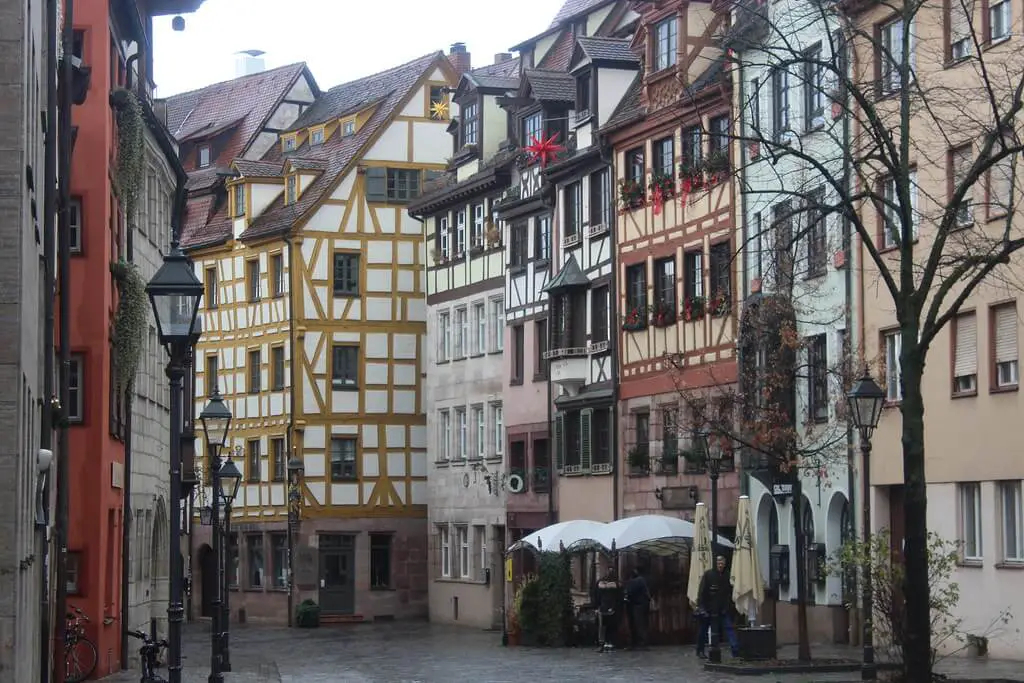
If this is your first time in Bavaria, then you need to dedicate the last day to Nuremberg. Explore the museums, monuments, enjoying shopping and lots of delicious Nuremberg sausages. The largest city in Franconia has a deep and varied history, from its privileged position in the Holy Roman Empire to its importance during the Nazi regime. During the Second World War, Nuremberg was heavily bombed and most of the city was destroyed. In Nuremberg, you should not miss the main market, where Frauenkirche and Schonen Brunnen stand, St. Lorenz, St. Sebaldus, Heilig-Geist-Spital, Weissgerbergasse and the rock-cut beer cellars. Lucky you if it is just before Christmas. Its annual Christmas Market is one of the most beloved in Germany.
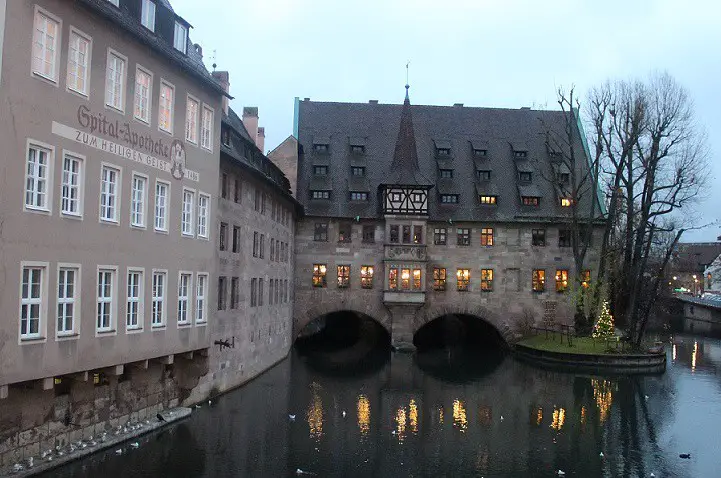
We closed our trip with a meal at Bratwursthäusle. People cram into this simple eatery to get a taste of the best homemade sausages in Nuremberg. They are grilled over an open fire in the middle of the restaurant and served with fresh bread, sauerkraut and delicious potato salad. With our bellies full, it was time for us to say goodbye to Nuremberg and head back to the airport.
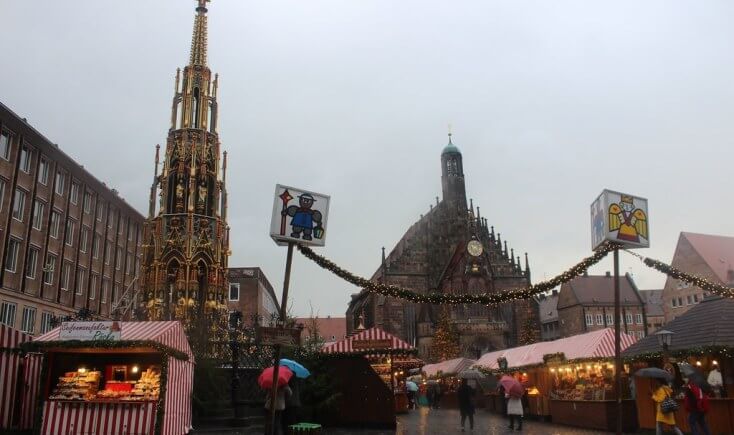
To make the most out of your stay, you should read my article dedicated to Nuremberg.
All in all, it was a fantastic trip and so should be yours. This 4-day itinerary covers only the main cities and sights in Franconia. However, if you’re visiting for longer, I highly recommend doing a trip to Bayreuth and Coburg, especially in December. Coburg is said to have the most charming Christmas market in the region and also features a castle. We did not have time to get there but would have loved to.
If you are traveling during advent, read my article dedicated to the Christmas markets is these cities. As we’ve mostly eaten at the Christmas markets, I can’t suggest you many food options out of the festive season.
Enjoyed reading about the best way to spend 4 days in Franconia? Pin it!
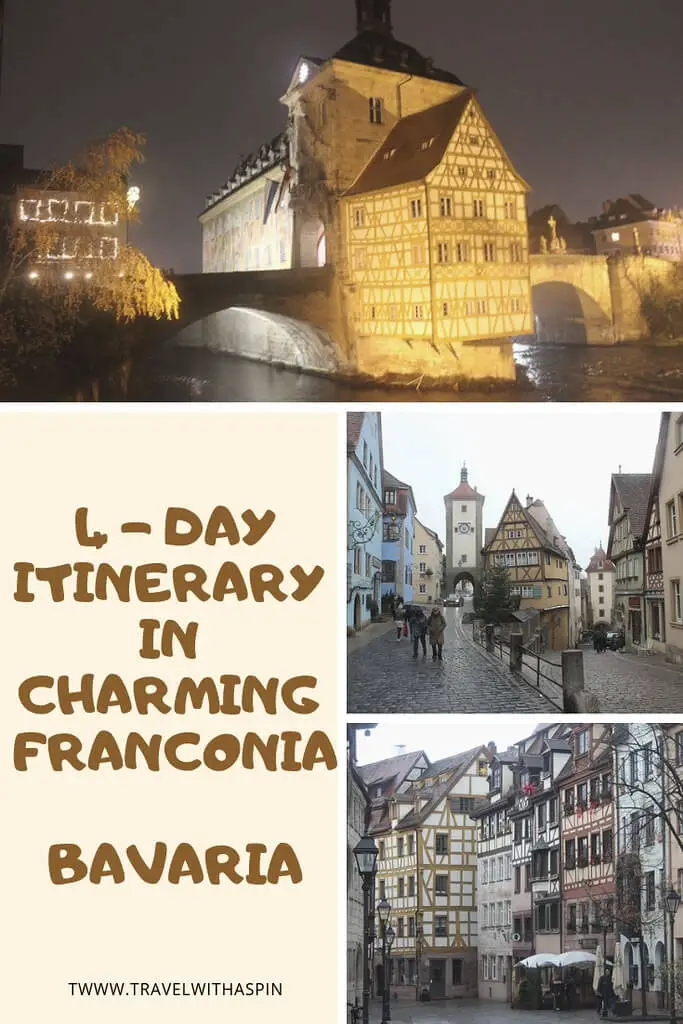
Have you been to Franconia before? How did you find it? Let me know in the comments below!
Travel With A Spin contains affiliate links. If you make a purchase through these links, I will earn a commission at no extra cost to you. Thanks for reading!
